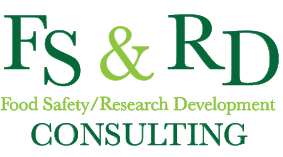Adopting a risk-based approach in order to optimize your Food Safety Program
It may seem as though everyone is talking about having a preventive and risk-based approach, but what does that mean exactly? A risk based approach analyzes the various processes within your food safety program and allows you to identify the risks that will have the greatest potential impact to your program.
Strategic risk analysis includes external risks such as legal and the potential effect of regulation changes as well as internal risks to your program, which could include a lack of food safety culture. In addition a strong risk analysis will assess all risks that may impact your program, including those that are unforeseen, such as a mismanagement of a complaint.
The first step is to IDENTIFY the various types of risk that can negatively impact or derail your food safety program. These risks can be placed into 3 types.
Operational risks include:
- lack of management commitment
- lack of food safety culture
- lack of procedures
- lack in commitment to documentation, trending
- risk of failing to be proactive
Regulatory risks include:
- failure to be compliant with process and / or labeling
- failure to execute on CFIA findings
- failure to adequately perform a recall
- failure to act on regulatory changes ie. Safe foods for Canadians Act
Reputational - When reviewing risks that are reputational, these can include unforeseen circumstances with customers, consumers etc. such as;
- the mis-management of consumer, customer, employee complaints,
- risk of lawsuit, economic downturn
Reputational risk is more challenging to detect as this includes things like customers posting complaints on social media, a recall of your product etc. The impact these risks have is difficult to quantify, as they have the greatest ability to affect your brand. And now with the ability for anyone to complain about you and your brand on-line this risk is far greater than it once was.
The second step is to MEASURE the risks and determine which risks have the greatest potential to impact your food safety program.
Several tools can be used to identify and measure the risks such as:
- SWOT - Strength, Weakness, Opportunity & Threat,
- FMEA - Failure modes and effect analysis,
- Fishbone,
- 8D
- Quantitative risk assessment (likelihood vs. severity)
Quantitative risk assessment (QRA) is a numerical estimate of the probability that a defined hazard will result vs. the severity that this harm could cause from that event.
Hazard
The potential to cause harm. Harm including ill health and injury, damage to property, plant, products or the environment, production losses or increased liabilities.
Risk:
The likelihood that a specified undesired event will occur due to the realisation of a hazard by, or during work activities or by the products and services created by work activities.
Assessment of the risk
By assessing the risk using a 1 - 5 scale on both likelihood versus the severity, with 1 being infrequent or minor, and 5 being quite likely, or major or critical this will allow you to group the risks into low, medium or high.
Once your risks have been evaluated and you understand your low, medium and high risks the final step is to CONTROL and MEASURE these risks.
Adopt preventive controls - put in place procedures and documentation to control or minimize your risks
Set up metrics - determine the right metrics to use to monitor the risks
Using deviations and internal audits to continually measure and assess the risks.
By using a risk based approach when assessing your Food Safety Program you will be able to
effectively control and manage your risk, effectively manage your resources and finances and maintain and continue to improve your Food Safety Program. If you feel that there is more that can be done with your program and you aren't sure where to start, feel free to email me at melissastevenson@fsrdconsulting.com or check out my website at www.fsrdconsulting.com.
